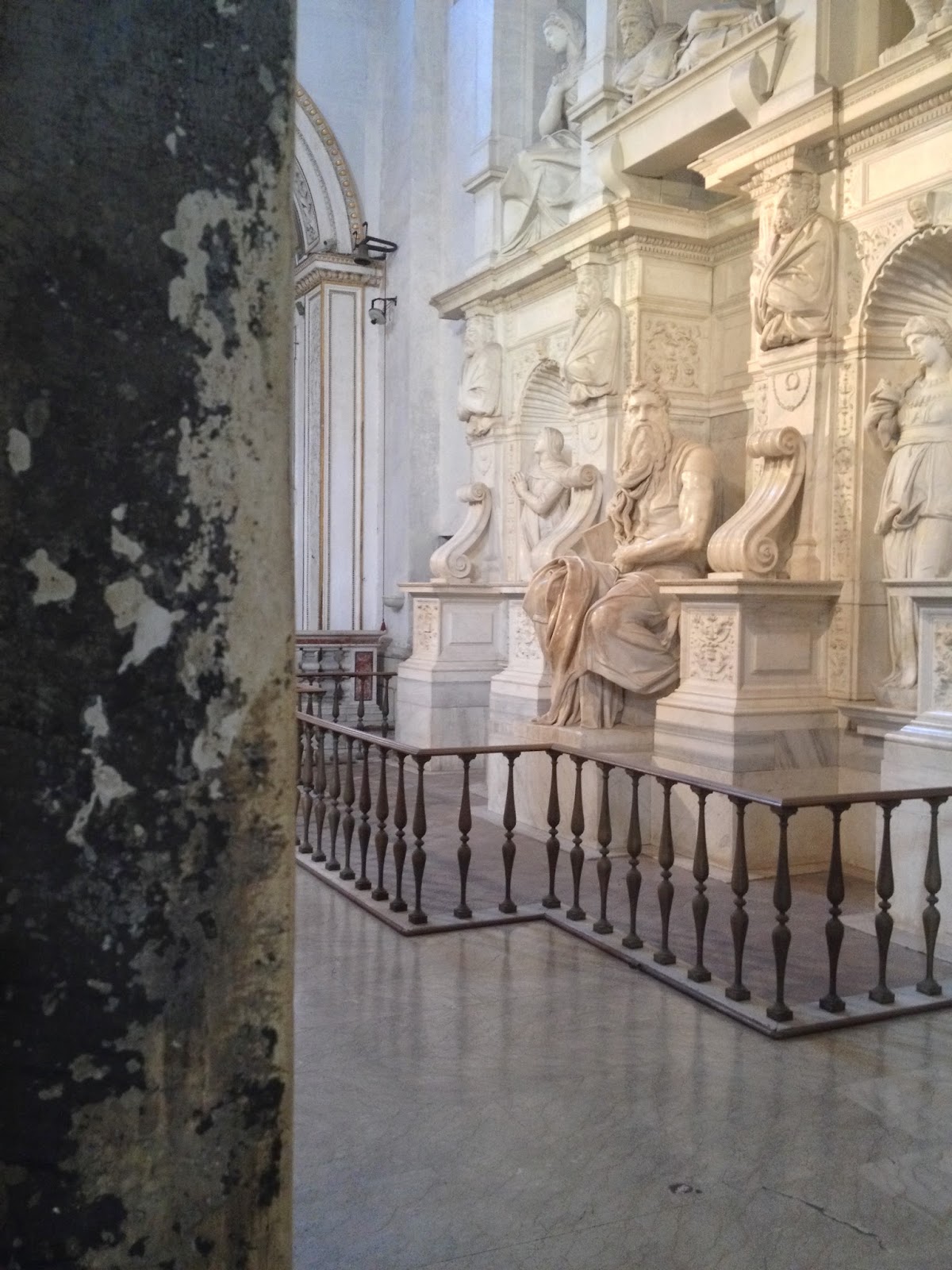Freud believed this sculpture to be one of the greatest works of art in the world, in part because it remained mysterious, offering new insights with each visit. This quality, he wrote in an anonymous article for an art journal, "
He continued:
"For no piece of statuary has ever made a stronger impression on me than this. How often have I mounted the steep steps from the unlovely Corso Cavour to the lonely piazza where the deserted church stands, and have essayed to support the angry scorn of the hero’s glance! Sometimes I have crept cautiously out of the half-gloom of the interior as though I myself belonged to the mob upon whom his eye is turned—the mob which can hold fast no conviction, which has neither faith nor patience, and which rejoices when it has regained its illusory idols."
Freud offers a profound reading of Michelangelo's purpose. In essence, he suggests that Michelangelo is not illustrating a scene from the Bible as written, but as he wishes it had been written. Michelangelo, in Freud's reading of the sculpture, is about to destroy the tablets but holds back, resisting the urge to take out his wrath on the people this way, and instead recalls the larger purpose for which he has been called:
"But Michelangelo has placed a different Moses on the tomb of the Pope, one superior to the historical or traditional Moses. He has modified the theme of the broken Tables; he does not let Moses break them in his wrath, but makes him be influenced by the danger that they will be broken and makes him calm that wrath, or at any rate prevent it from becoming an act. In this way he has added something new and more than human to the figure of Moses; so that the giant frame with its tremendous physical power becomes only a concrete expression of the highest mental achievement that is possible in a man, that of struggling successfully against an inward passion for the sake of a cause to which he has devoted himself."
I am taken with Freud's interpretation but with an eye to understanding it in the context of the Torah as written. The power of the sculpture begins with the look on Moses' face. There is no anger, no fury, no gritting of teeth (like the Bernini sculpture of young David preparing to slay Goliath, in the Boghese Gallery). Instead, the look is one of resignation, of a calm, detached view at an awful scene before him -- the worship of the Golden Calf. The tablets, the all-important, tablets, inscribed not only with the Ten Commandments, but with the whole of the Torah, have been pushed to the side, and have become an arm rest for Moses' right arm, weary from his 40 days and nights on Sinai.
Moses has returned from the greatest journey of his life, to offer the greatest gift, one delivered to him directly from the God who had rescued the people from Egypt, and to whom Moses had spent forty days with on Sinai, only to find his people worshiping an invented God. There will be anger, the tablets will be broken (and new ones created), and the disloyal will be killed, but for now, there is something worse: recognition. Moses here exhibits a feeling of recognition that this journey, which might have taken but weeks, will now take much longer. This people, his people, have not just moved more slowly toward loyalty and commitment to the covenant, but instead have slid backward into their fears, desperately coveting something simpler, even slavery, and the certainty of visible Gods. Moses is pictured at the exact moment when he has realized his greatest moment of triumph has, in an instant, slipped away. In this split second, visions of bestowing the tables on the people, and of them marching steadily towra the promised land are wiped away. This people to whom he is tied will need decades to free themselves from slavery.
The tablets, thin, stuck together, resting under his arm, almost behind him, have suddenly lost their importance to the point of slipping away. Moses sees the catastrophe before him, which will lead to the deaths of many, and must suddenly have an inkling that he may not be allowed to make to the promised land. The beard is swirling in the wind, and caught in his fingers, the result of perhaps the last gusts of the storm of God's presence from Sinai. But Moses' mind may be settling, just for this moment, on the tragedy of his own life -- that he will have to see this people through the desert, through their enslaved souls, to the promised land, that he will only see from afar.
His moment of greatest strength has turned into his moment of greatest weakness. Moses will not, as Freud, and perhaps Michelangelo hoped, conquer this feeling. He will soon, in just a moment, turn to anger. But we see a moment before, when Moses simply, honestly, resignedly, accepts the harsh journey his people, and he, will have to travel.


No comments:
Post a Comment